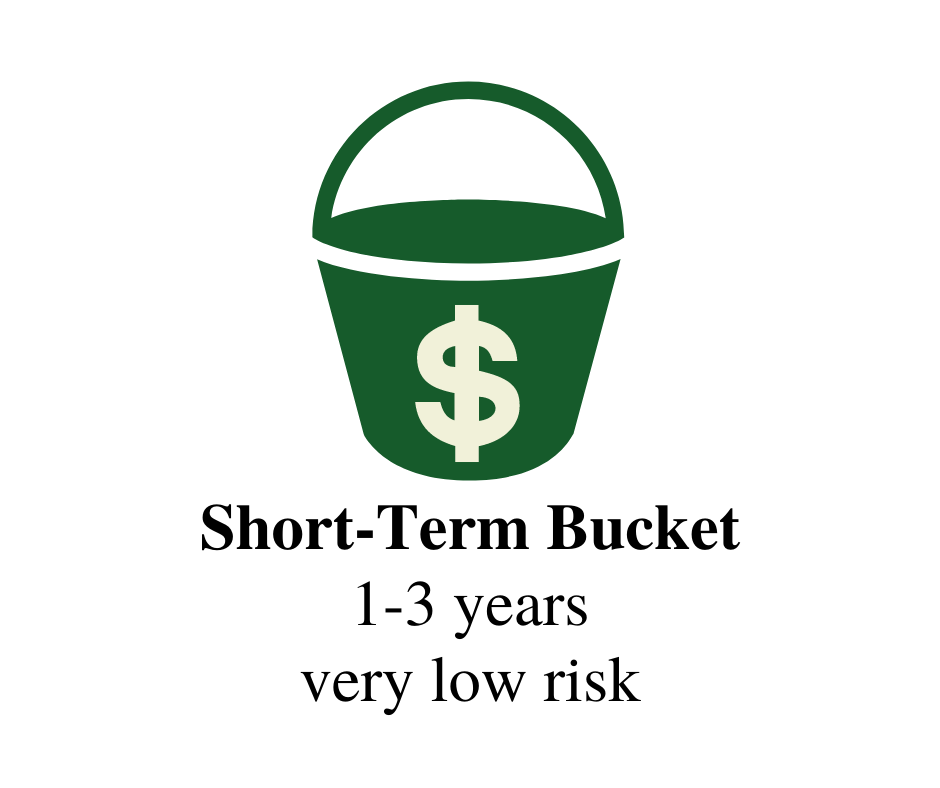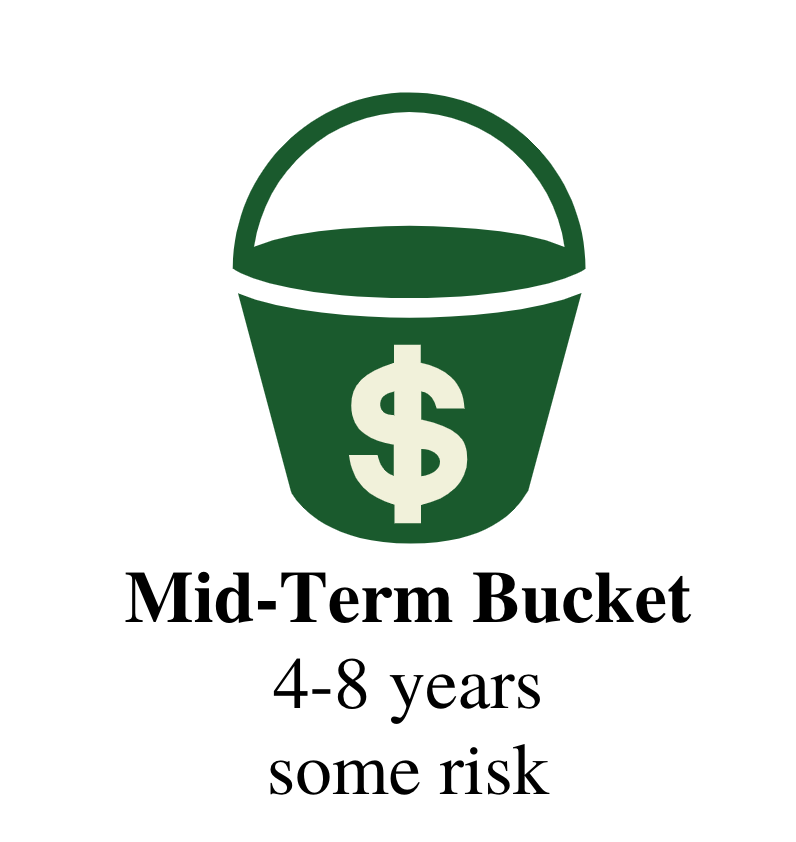3 Buckets of Retirement Planning
Keep Your Financial Plan Simple
I want to talk very briefly about some simple concepts when it comes to putting together a financial plan. I think most people make this way too complicated. I’ve seen people come into our office with these big binders – 80, 100, 120 pages – and they call it a financial plan. Of course, it is a financial plan, but the problem is that it’s so complex that clients and prospective clients that get those from other advisors tend to become overwhelmed. It takes so long for them to go through the information that it freezes them into inactivity. They don’t know what to do first and, quite frankly, no matter how detailed a financial plan is – if you don’t have enough confidence to act on it and it isn’t simple enough to take small steps forward – it doesn’t do you any good.
What Is a Basic Financial Plan?
I want to talk about what a basic financial plan is. At the basic level, a financial plan is about you deciding where are you now and where you want to go. Most people need help to figure that out. Where are you now? Where do you want to go? Stephen Covey, the great author, and organizational expert that worked with so many businesses out there a few years back, always talked about beginning with the end in mind.
“Begin with the end in mind.”
– Stephen Covey
So many financial advisors will get clients in and obsess about the investments. Do you own the right fund? Do you own dividend-paying stocks? Should you buy or sell the stocks? They use all these complicated words like standard deviation and asset allocation. They lose the basic fact that people want to get to a destination. The question is “Where are they now? What do they need to do to get to that destination?”
A financial plan can be simple. Here’s what I think you need:
- A retirement income plan
- A risk assessment of where you are right now
- Think about your dreams and the dangers of realizing those dreams
When You’re in Retirement, How Do You Structure Your Income?
When you get to retirement (if you’re not in retirement, let’s pretend that you are), how do you structure your income? How do you structure your investments in a way to serve your income needs so that you minimize the risk as much as you possibly can? You want to be able to relax and know that you have checks coming in every month to meet all your goals.
The Bucket Retirement Strategy
Let’s say you’re about to take or you already are taking income. You want to make sure that you have a consistent income. You aren’t taking too much risk with your investments, but at the same time, you’re still taking enough risk. You’re exposed enough to equities – whether that means equity ownership in real estate or equity ownership in stock – that keep up with inflation.
You may have heard about the retirement income bucket strategy. Most people think of this strategy as having short-term, medium-term, and long-term money. It’s really important to understand this strategy.
The danger that a lot of people face is not getting enough current income. It’s important to make sure your income keeps up with inflation as the cost of living goes up.
I believe a great strategy for many people (not for everyone) is to divide your income into three different buckets. Here are the three buckets:
- Short-Term Bucket ➞ 1-3 years
- Medium-Term Bucket ➞ 4-8 years
- Long-Term Bucket ➞ 9+ years
The reason you may want to divide the money up is so you can take different investment strategies with the different buckets. This is helpful because if you have different risk levels, then you can keep up with inflation and at the same time, not worry about your current income. Why would you want to do that? Because when the market goes down, you don’t want to be taking money out of it. That is called selling low, and you want to buy low and sell high. By creating the bucket strategy, it alleviates the concern that you’re going to sell assets when they’re at their low. It allows you to wait for the recovery to happen.
Short-Term Financial Bucket:

Let’s go over the strategy for the short-term bucket, 1-3 years. Let’s say you need $10,000 a month for three years. That’s $360,000. So, in this bucket, we’re going to put enough to generate $360,000 of income for the next three years. Typically, you’re going to have very low-risk assets here. You might only earn a 3-4% rate of return hypothetically. Maybe you’ll have a lot of fixed income. Maybe you’ll use some kind of insurance product. You could have dividend-paying stocks, which probably is not the case for this bucket. You want to have enough money to earn a little bit of interest and generate $360,000 of income for that $10,000 a month.
Now, you don’t need $360,000 to pay yourself $360,000 of income out over three years because you’re going to earn interest on some of the money. Let’s say in this case, hypothetically speaking, you put in $320,000. That will give you $10,000 a month for the next three years. Why? Because you’re going to earn a little bit of interest. Again, these numbers are not exact – I’m only giving an example.
That money is going to be invested very low risk. On a risk scale of 1-100, this might be a 20, which is a really low risk.
Medium-Term Financial Bucket:

Because you know that you’re going to leave this money alone for 4 years, you’re not going to take any money out. You can invest it differently because you don’t have to worry as much about selling at a low.
You want to continue on the $10,000 a month, while also understanding that the cost of living goes up. Now your $10,000 a month might need to increase a little bit. There are five years of income there at $10,000 a month. 60 months total. Let’s say you want to protect against inflation. You’re actually going to put $600,000 in this bucket. That’s going to grow a little bit. You also want to give yourself a raise above the $10,000 that you started with. Now there’s enough money there, assuming a reasonable rate of return.
Short-Term vs Medium-Term Financial Buckets:
You have your short-term bucket where you’re going to take a very low risk. You don’t want to worry about that income. Then you have the medium-term bucket. You can take some risk with that because, again, you want to grow the money in the next three years. So maybe you have a combination of 40% stocks and 60% bonds. Maybe you can get a reasonable rate of return on that of 4 ½ or 5%. Then that’s going to satisfy your needs for the five years after the three years are over. Now you’ve got eight full years of income that you don’t have to worry too much about.
In fact, planned properly in regular circumstances, you might even have a little bit of money left in that bucket at the end of that five-year period.
Long-Term Financial Bucket:

Your short-term and medium-term buckets give you the ability to leave your long-term bucket alone for nine years. That means you can take more risk. You can expose yourself more to investments that tend to keep up with inflation and have a higher rate of return rather than these shorter buckets. Traditionally, that would be stocks or ownership in companies. It could be private investments, but for most people, it’s stocks or certain types of institutional real estate where you can get a higher reasonable rate of return.
The key is here, you don’t have to sell early. One of the reasons why insurance companies invest so much money in real estate is they don’t tend to have a lot of short-term assets. If they know they buy a building that they don’t have to sell for 10,15,20 years they don’t mind giving up the liquidity. Why? Because they’re going to get a higher rate of return. So, these are the kind of things we talk about in the long-term bucket.
If you put money in that long-term bucket, you could leave it alone for a long time. You might have two short-term downturns in the market in nine years. It gives you the ability to leave that money alone and let it come back. This might be your biggest bucket. Again, this isn’t exact math, just an example.
Maybe you put $2 million in that bucket and leave it alone for nine years. At an 8% return, that’s going to double by the time you hit it in nine years. 8% might be a little aggressive. Johnson Brunetti doesn’t usually plan for 8% in our financial plans. We like to be conservative and surprise on the upside. Again, now that you’ve got money that you can leave alone for nine years.
How to Apply the 3 Bucket Strategy to Your Retirement Plan
How would you feel if you got to retirement and you had a plan where you said, “I don’t have to worry at all, except for the first three years?” You start off very conservative in those first three years. After that three years of income, you’ve got some money that can have some equity exposure. Some money can go up and down. You also have a bunch of money in there that’s really steady. Now, you’ve got that next five years of income provided for. After that, you’ve got this money, this nine-year money, that for most people they hope to leave some of that alone for kids or grandkids.
This is your bucket strategy. The point of this is not to be technical, fancy, or gimmicky. The point is to give you high confidence and remove some of the fear of not having enough income or having to change your lifestyle because the markets go down.
I think the ideal retirement plan is a retirement plan where you have a very high degree of confidence and you don’t have to change your lifestyle based on short-term things that are going on. There are some people out there right now, during this period that we’re in, that do not have to worry at all about their future income. There are people out there right now that have a high degree of confidence and very little fear.
On the other hand, there are a lot of people that are panicking right now. Maybe it’s because they don’t have a financial plan. Maybe it’s because they don’t have enough money. There are a lot of people out there with a lot of money and they would have enough if it was just structured properly. Many people are worried because it’s either not structured properly or they don’t have somebody helping them to make sure they can rely on a plan that will create confidence.
The three-bucket strategy is a simple concept. Hopefully, everyone has one where you begin with the end in mind. You look at what’s out there in the future and you bring it right back to today and say, “Where do I want to go? Where am I today? How do I get there?”
I hope you’ve enjoyed this topic and are thinking about a strategy with your own money. If you have any questions or want to create a strategy for yourself, please contact us to meet with one of our financial advisors.
If you liked this topic, but aren’t ready to request a call just yet, you will enjoy my Virtual Financial Workshop which I made to give you some basic financial concepts to think about. You can also attend one of our free educational workshops to learn some of these concepts in-person at a location near you.
Information presented in our podcasts is considered current as of the created date. Over time, some information presented may become stale. We recommend you consult with your Financial Professional before making any changes based on information contained here.
Johnson Brunetti is a marketing name for the businesses of JB Capital and JN Financial.
Investment Advisory Services offered through JB Capital, LLC. Insurance Products offered through JN Financial, LLC.


